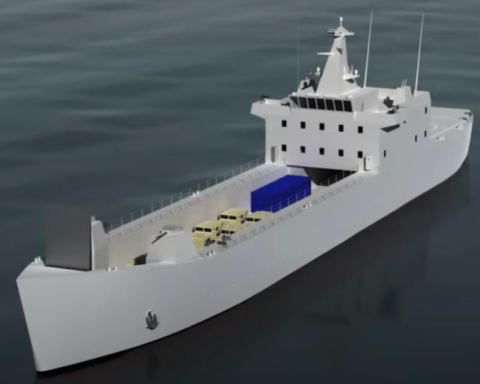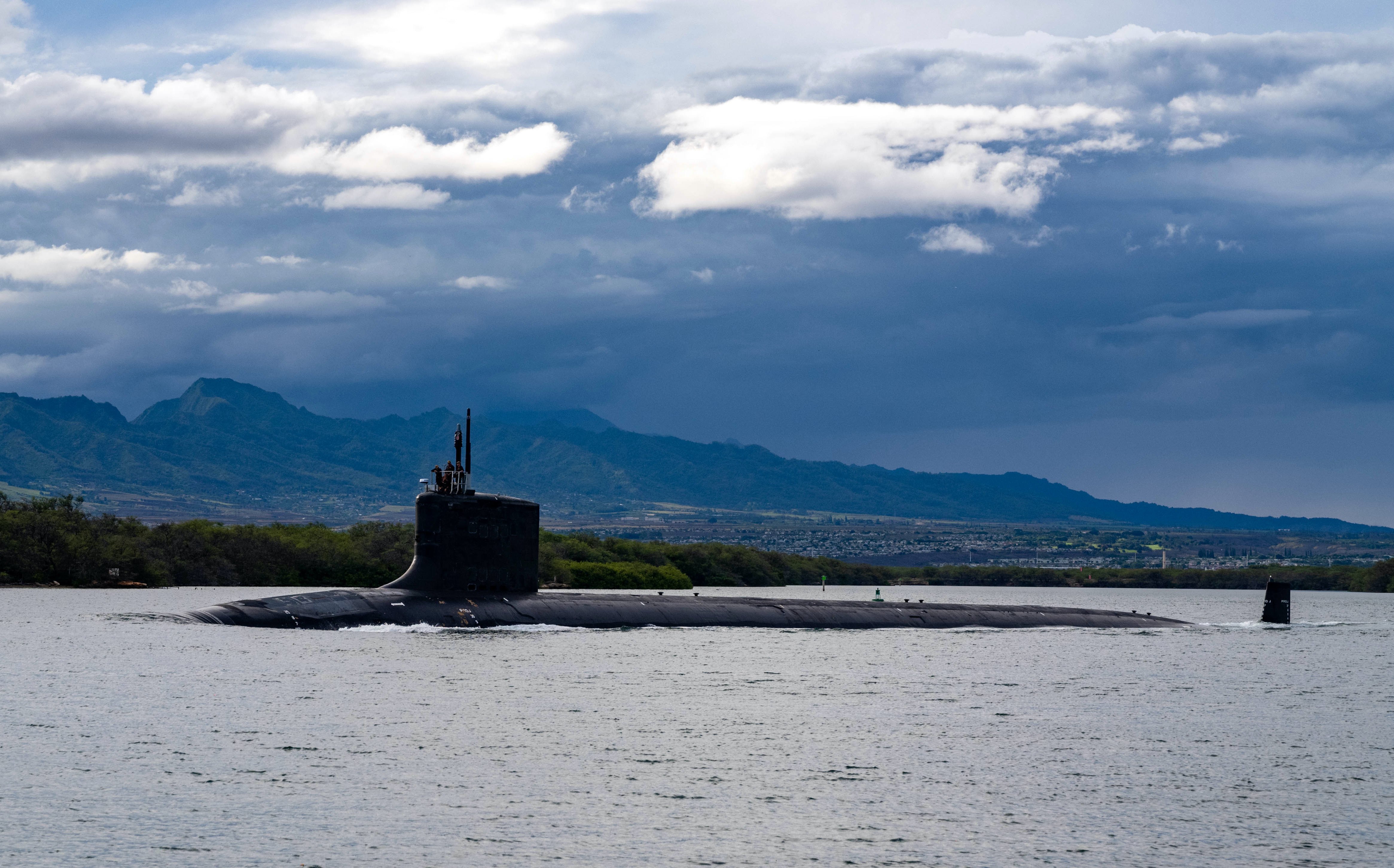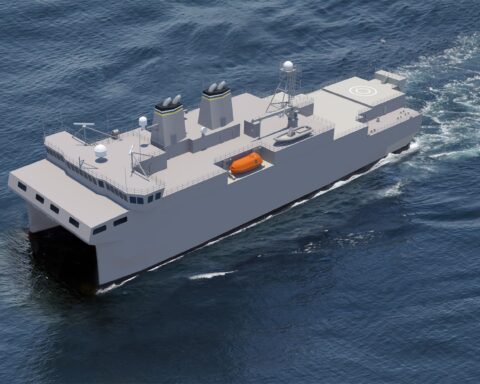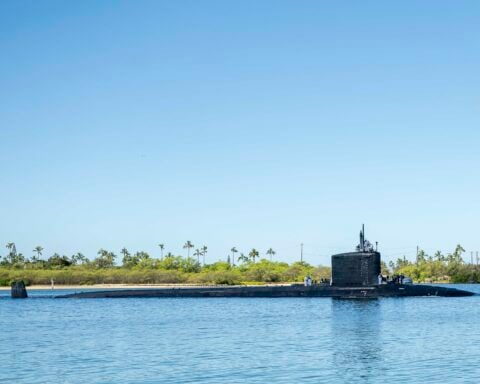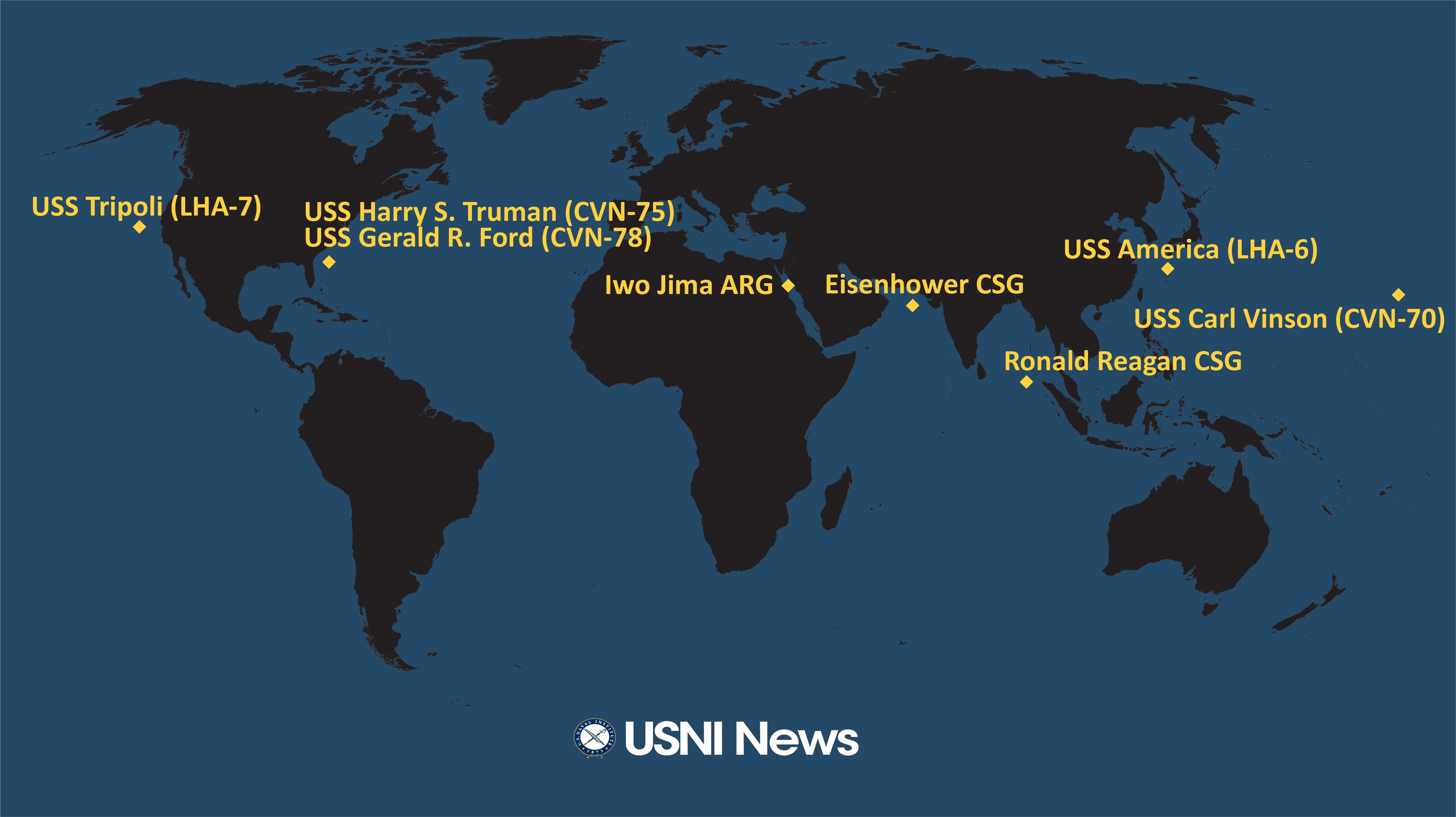
These are the approximate positions of the U.S. Navy’s deployed carrier strike groups and amphibious ready groups throughout the world as of June 21, 2021, based on Navy and public data. In cases where a CSG or ARG is conducting disaggregated operations, the chart reflects the location of the capital ship.
Total U.S. Navy Battle Force:
296
Ships Underway
| Deployed Ships Underway | Non-deployed Ships Underway | Total Ships Underway |
| 62 | 33 | 95 |
Ships Deployed by Fleet
| Fleet Forces | 3rd Fleet | 4th Fleet | 5th Fleet | 6th Fleet | 7th Fleet | Total |
| 0 | 3 | 2 | 21 | 18 | 55 | 99 |
In the Philippine Sea
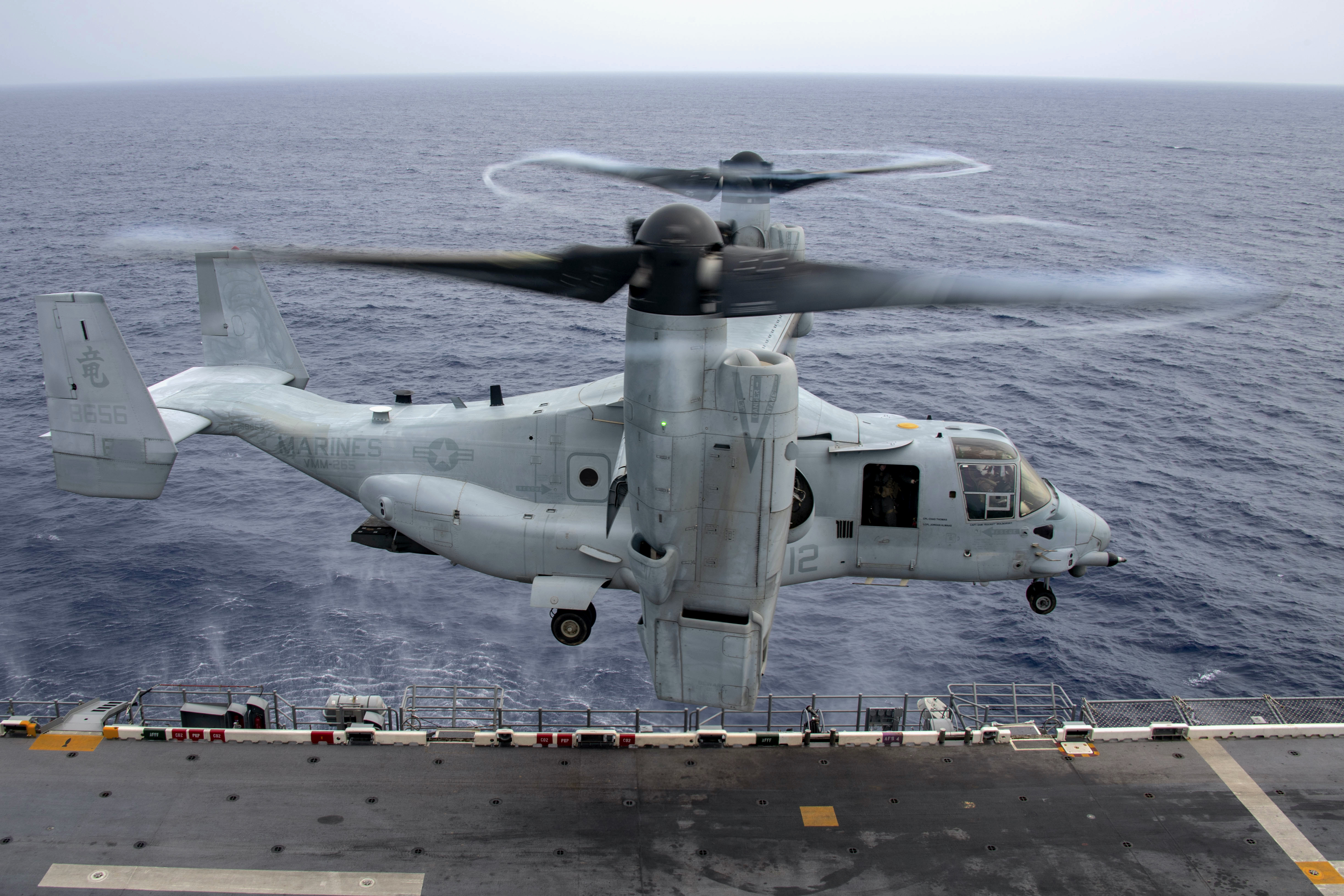
Japan-based America Amphibious Ready Group is underway in the Western Pacific. The ARG, made up of USS America (LHA-6), USS New Orleans (LPD-18) and USS Germantown (LSD-42), is underway in the Philippine Sea with the 31st Marine Expeditionary Unit embarked.
The 31st MEU is currently comprised of Marine Medium Tiltrotor Squadron (VMM) 265 (Reinforced) as the Amphibious Combat Element, Battalion Landing Team, 3rd Battalion, 5th Marines as the Ground Combat Element and Combat Logistics Battalion 31 as the Logistics Combat Element.
In the Indian Ocean
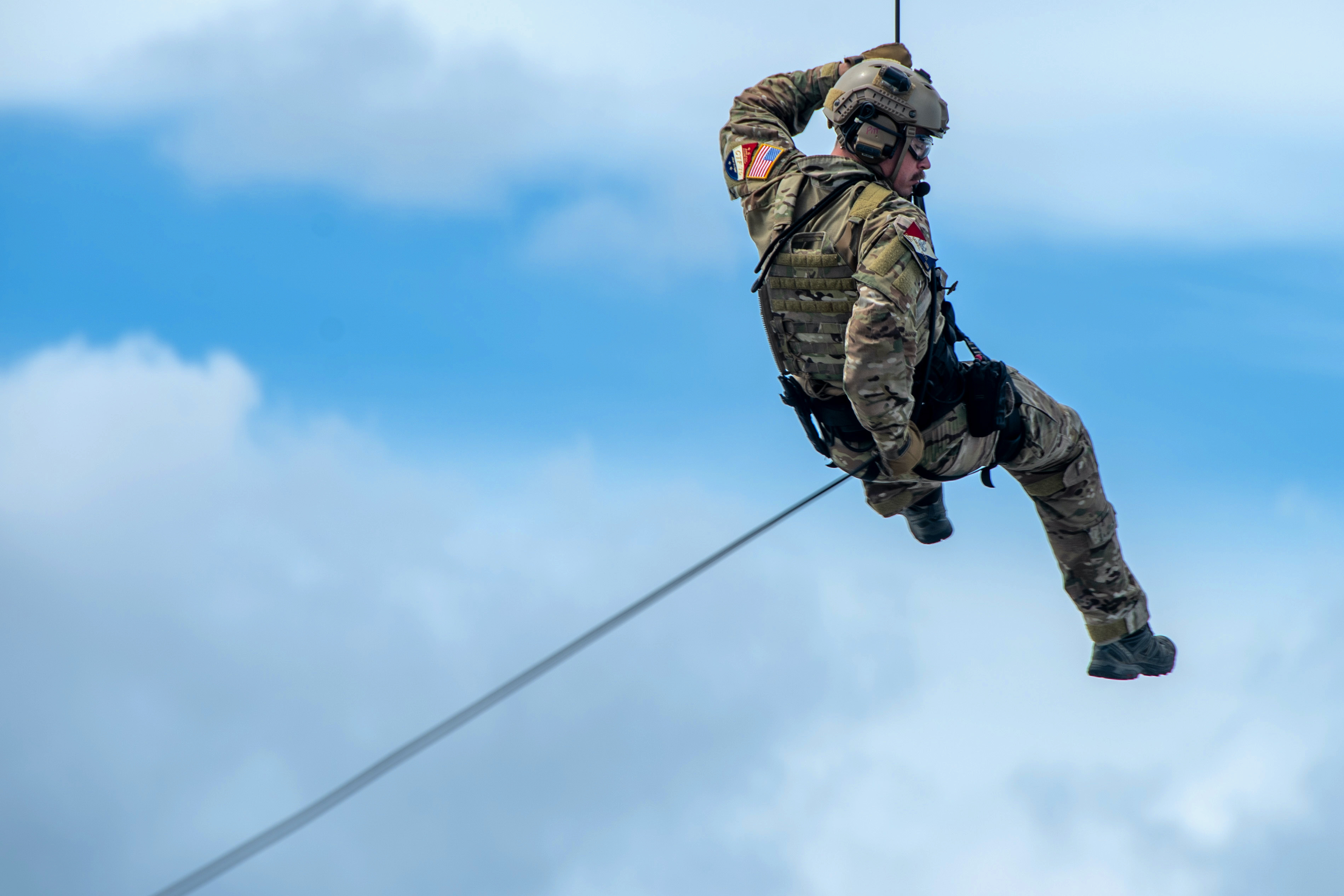
The Reagan Carrier Strike Group (CSG) is transiting the Indian Ocean. The Reagan CSG is expected to continue to U.S. 5th Fleet and take over from the Eisenhower Strike Group to support the remainder of the U.S. withdrawal from Afghanistan.
“Ships and aircraft from the Ronald Reagan Carrier Strike Group (CSG 5) and the Republic of Singapore Navy (RSN) conducted integrated bilateral training, June 17,” in the South China Sea, according to U.S. Pacific Fleet.
Aircraft carrier
USS Ronald Reagan (CVN-76), homeported in Yokosuka, Japan.
Carrier Air Wing 5
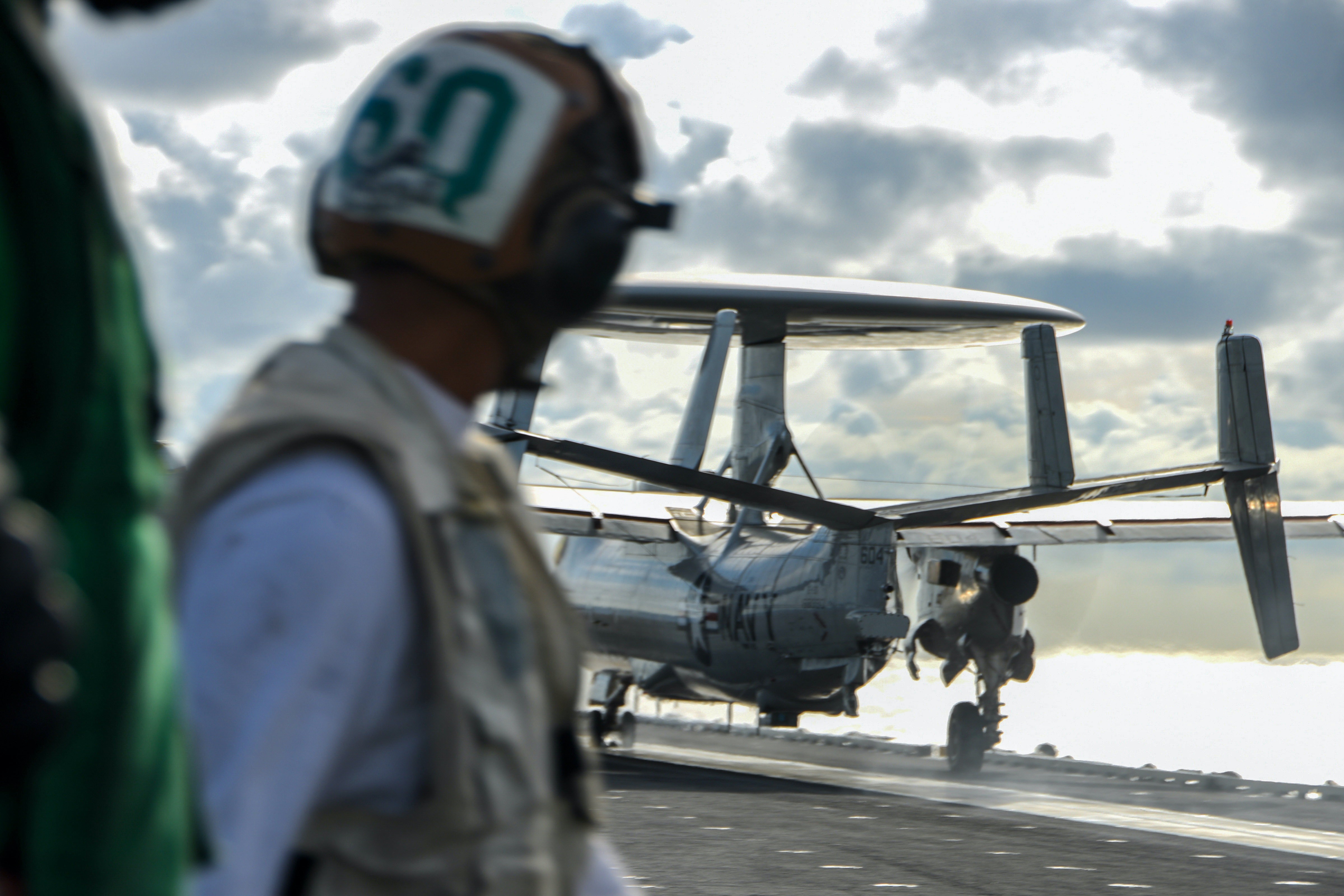
Carrier Air Wing (CVW) 5, based at Marine Corps Air Station Iwakuni, Japan, is embarked aboard Ronald Reagan and includes a total of nine squadrons and detachments:
- The “Royal Maces” of VFA-27 – Strike Fighter Squadron (VFA) – from Marine Corps Air Station Iwakuni
- The “Diamondbacks” of VFA-102 from Marine Corps Air Station Iwakuni
- The “Eagles” of VFA-115 from Marine Corps Air Station Iwakuni
- The “Dambusters” of VFA-195 from Marine Corps Air Station Iwakuni
- The “Shadowhawks” of VAQ-141 – Electronic Attack Squadron (VAQ) – from Marine Corps Air Station Iwakuni
- The “Tigertails” of VAW-125 – Carrier Airborne Early Warning Squadron (VAW) – from Marine Corps Air Station Iwakuni
- The “Providers” of VRC-30 – Detachment 5 – Fleet Logistics Support Squadron (VRC) – from Marine Corps Air Station Iwakuni
- The “Golden Falcons” of HSC-5 – Helicopter Sea Combat Squadron (HSC) – from Naval Facility Atsugi, Japan
- The “Saberhawks” of HSM-77 – Helicopter Maritime Strike Squadron (HSM) – from Naval Air Facility Atsugi, Japan
Cruiser
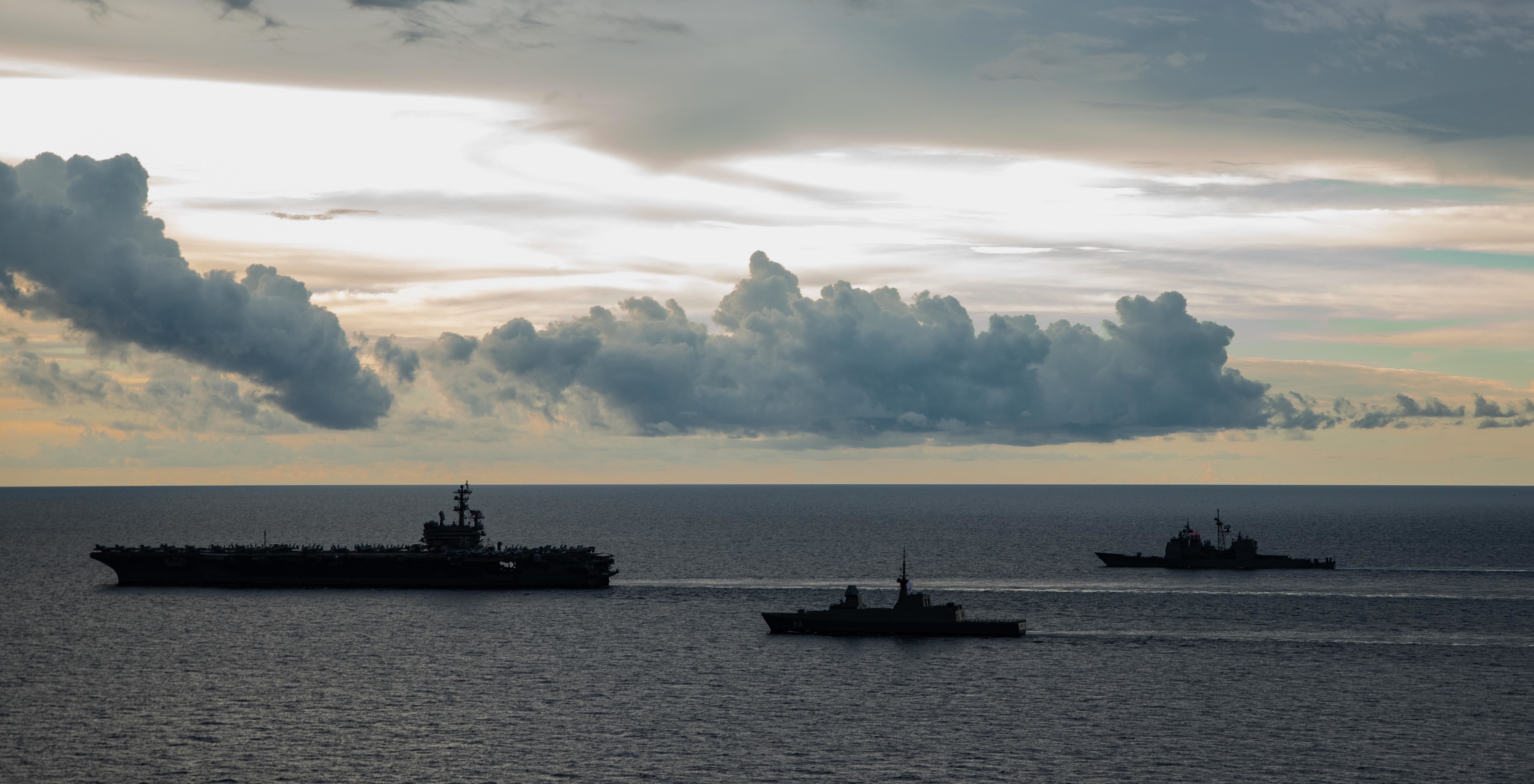
USS Shiloh (CG-54), homeported in Yokosuka.
Destroyer Squadron 15
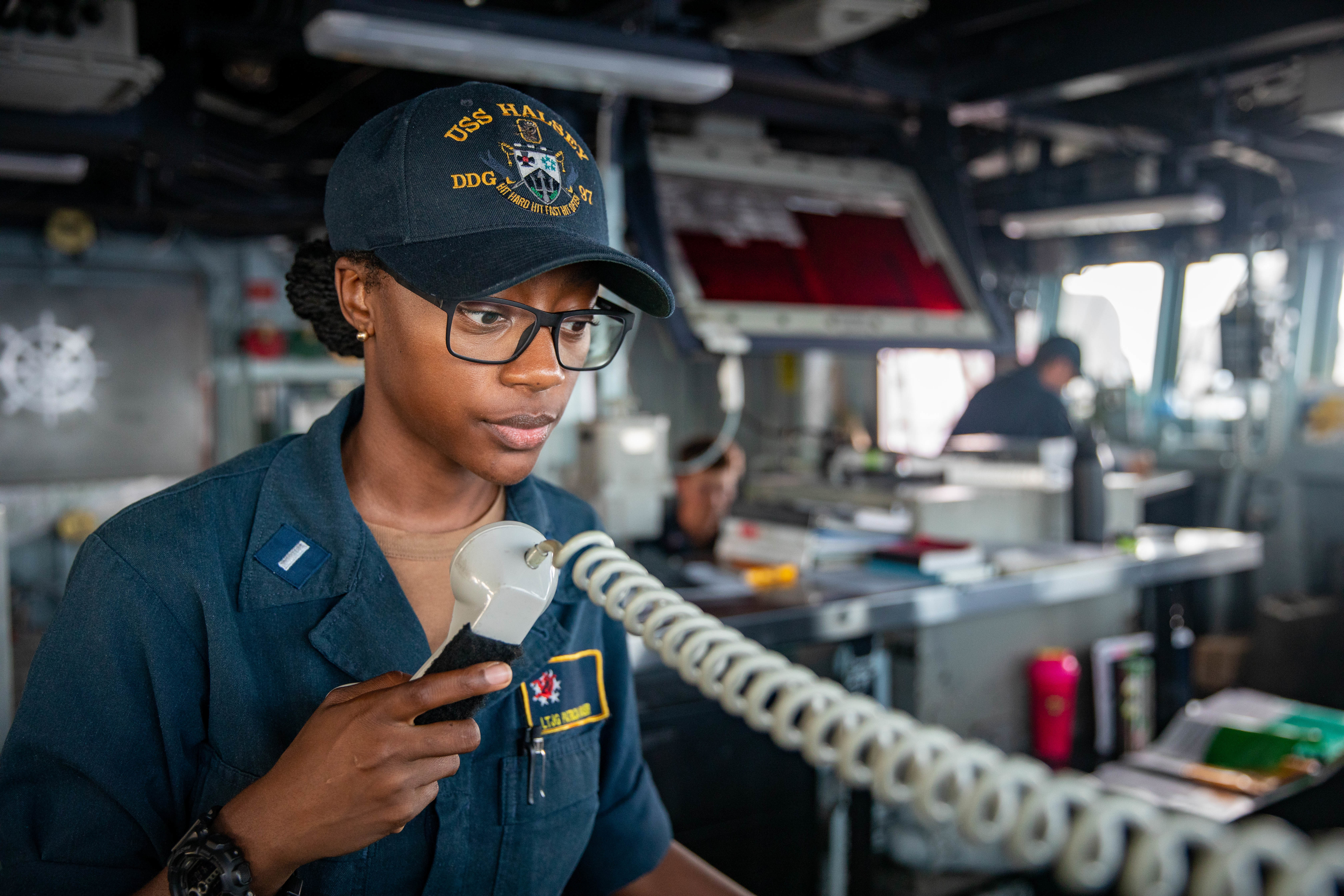
Destroyer Squadron 15 is based in Yokosuka, Japan, and is embarked on the carrier. U.S. 7th Fleet has not fully specified the escorts accompanying Reagan on its patrol, but the CSG includes:
- USS Halsey (DDG-97), homeported in Pearl Harbor, Hawaii.
In the North Arabian Sea
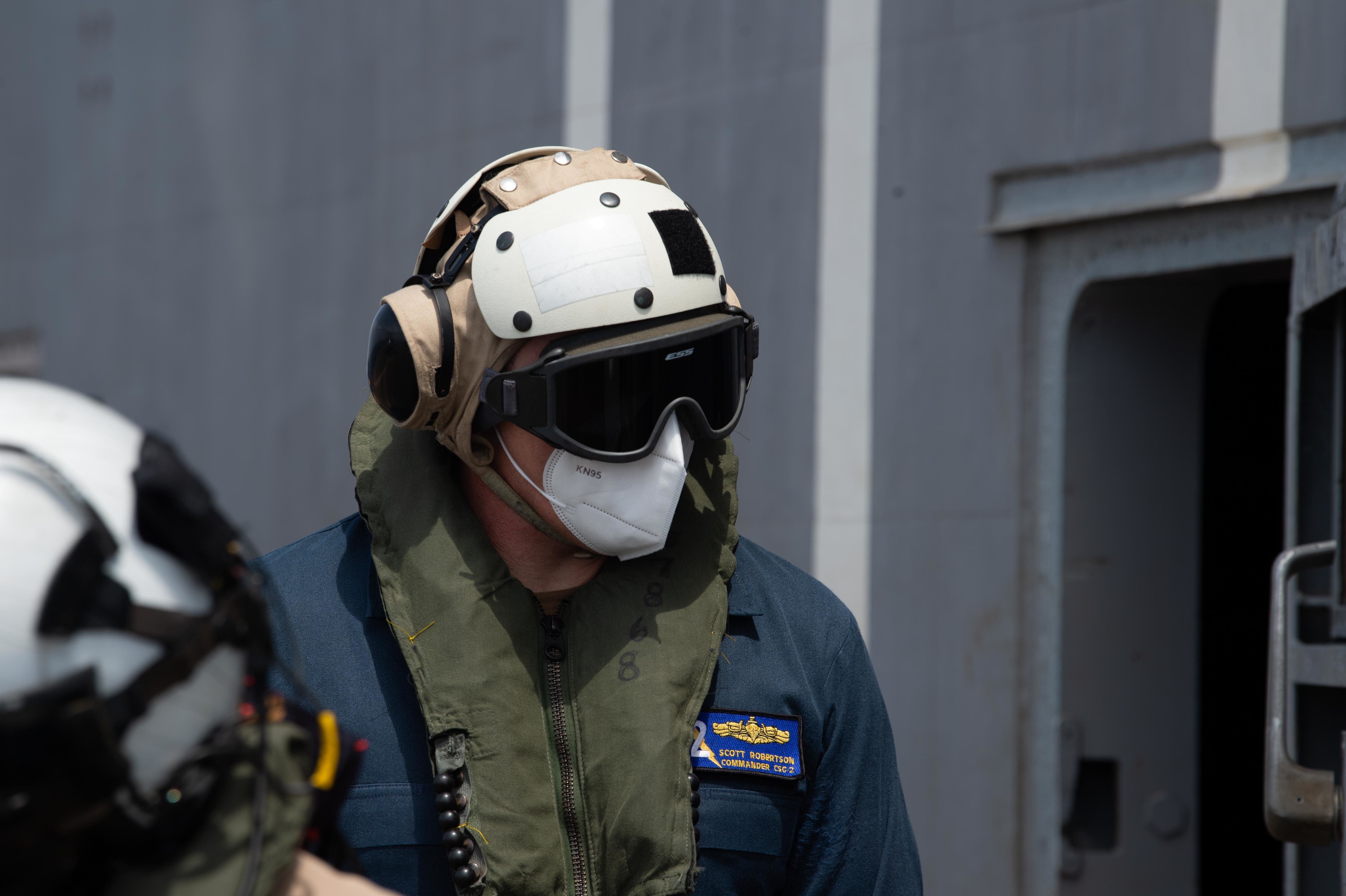
USS Dwight D. Eisenhower (CVN-69), Carrier Air Wing 3 and IKE’s escorts have been operating in the North Arabian Sea since arriving in U.S. Central Command in early April. Eisenhower conducted a three-day port visit in Duqm, Oman this past week.
The Eisenhower CSG is expected to return from its deployment when the Reagan Carrier Strike Group (CSG) arrives later this summer to support the U.S. withdrawal from Afghanistan.
Carrier Strike Group 2
Norfolk-based CSG 2 commands the Dwight D. Eisenhower CSG and is embarked on the carrier.
Aircraft carrier
USS Dwight D. Eisenhower (CVN-69), homeported in Norfolk, Va.
Carrier Air Wing 3
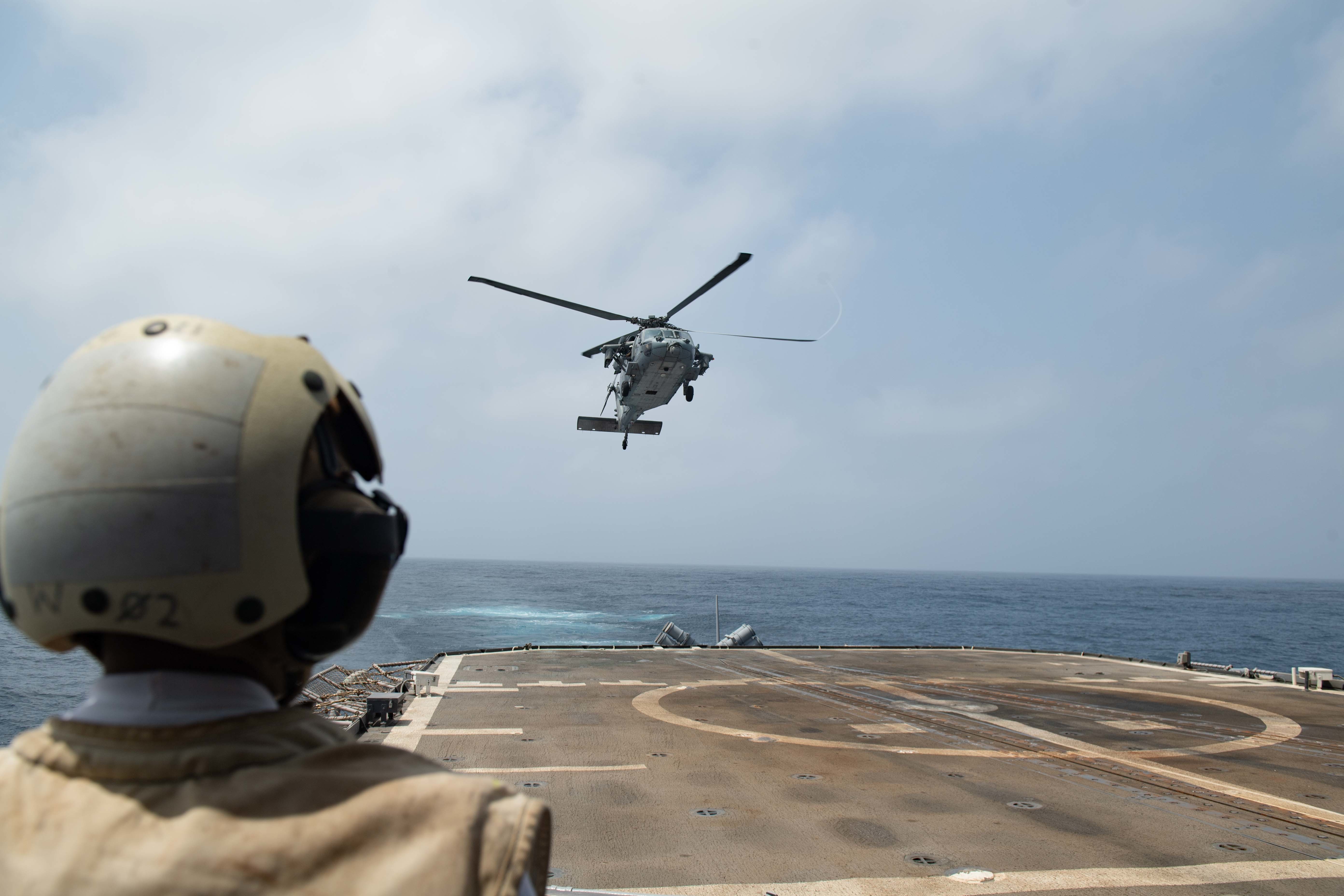
Carrier Air Wing 3, based at Naval Air Station Oceana, Va., is embarked aboard Dwight D. Eisenhower and includes a total of nine squadrons and detachments:
- The “Fighting Swordsmen” of VFA-32 – Strike Fighter Squadron (VFA) – from Naval Air Station Oceana, Va.
- The “Gunslingers” of VFA-105 from Naval Air Station Oceana, Va.
- The “Wildcats” of VFA-131 from Naval Air Station Oceana, Va.
- The “Rampagers” of VFA-83 from Naval Air Station Oceana, Va.
- The “Zappers” of VAQ-130 – Electronic Attack Squadron (VAQ) – from Naval Air Station Whidbey Island, Wash.
- The “Screwtops” of VAW-123 – Carrier Airborne Early Warning Squadron (VAW) – from Naval Station Norfolk, Va.
- The “Rawhides” of VRC-40 – Detachment – Fleet Logistics Support Squadron (VRC) – from Naval Station Norfolk, Va.
- The “Dusty Dogs” of HSC-7 – Helicopter Sea Combat Squadron (HSC) – from Naval Station Norfolk, Va.
- The “Swamp Foxes” of HSM-74 – Helicopter Maritime Strike Squadron (HSM) – from Naval Air Station Jacksonville, Fla.
Cruisers
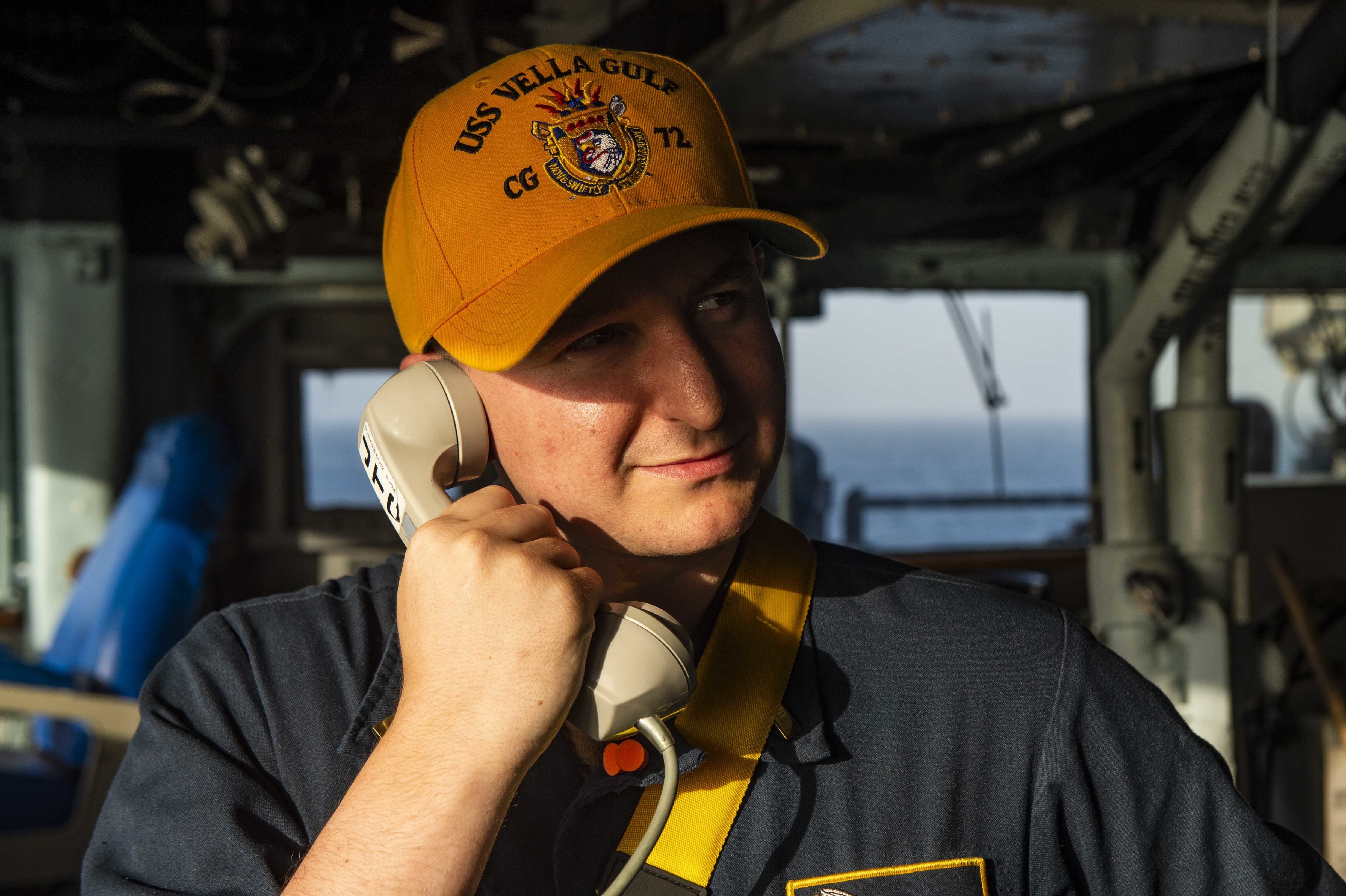
- USS Monterey (CG-61), homeported in Norfolk, Va.
- USS Vella Gulf (CG-72), homeported in Norfolk, Va.
Destroyer Squadron 22

Destroyer Squadron 22 is based at Norfolk and its leaders are embarked on Eisenhower.
- USS Thomas Hudner (DDG-116), homeported in Mayport, Fla.
- USS Laboon (DDG-58), homeported in Norfolk, Va.
- USS Mitscher (DDG-57), homeported in Norfolk, Va.
- USS Mahan (DDG-72), homeported in Norfolk, Va.
In the Red Sea
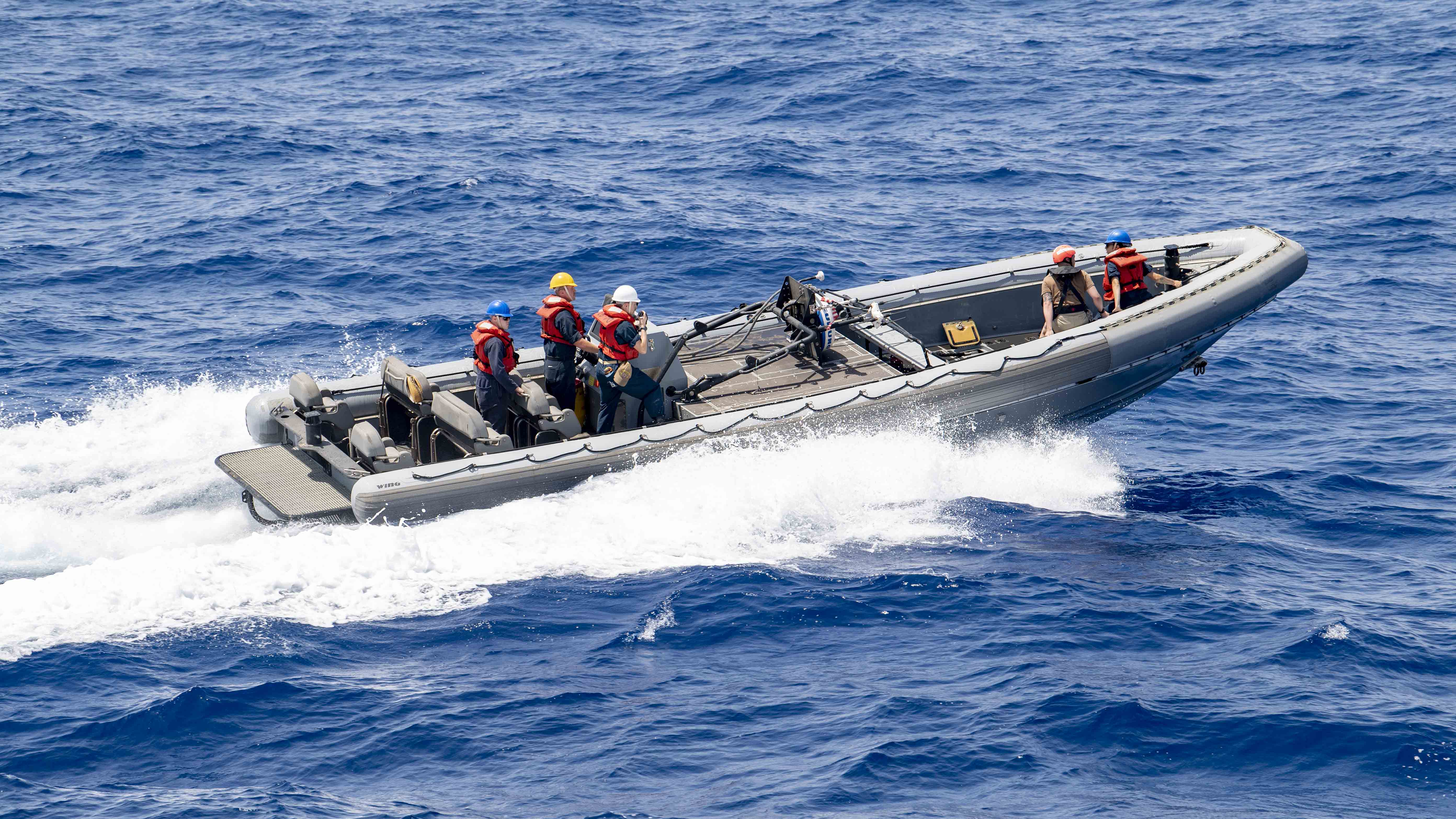
The Iwo Jima Amphibious Ready Group (ARG) and the 24th Marine Expeditionary Unit (MEU) remain in the Red Sea, operating in the U.S. 5th Fleet area of operations. The ARG made a Suez transit on June 1. The ARG recently made port calls in Aqaba, Jordan ahead of Joint exercise Eager Lion.
“Eager Lion is an annual U.S. Central Command exercise in Jordan designed to strengthen military-to-military relationships between the U.S., Jordan and other international partners. This year’s iteration is comprised of about 7,200 military personnel from more than 20 nations that will respond to scenarios involving border security, command and control, cyber defense and battlespace management,” according to U.S. Central Command.
Wasp-class amphibious assault ship USS Iwo Jima (LHD-7), Harpers Ferry-class dock landing ship USS Carter Hall (LSD-50) and amphibious transport dock USS San Antonio (LPD-17) make up the ARG. Embarked detachments for the Iwo Jima ARG include Amphibious Squadron Four, Fleet Surgical Team (FST) Six, Helicopter Sea Combat Squadron (HSC) 26, Tactical Air Control Squadron (TACRON) 21, Naval Beach Group (NBG) Two, Beach Master Unit (BMU) Two, Assault Craft Unit (ACU) Two and Four, and Sailors from Amphibious Construction Battalion (ACB) Two.
The 24th MEU, which is headquartered at Marine Corps Base Camp Lejeune, N.C., consists of a Ground Combat Element, Battalion Landing Team (BLT) 1/8, a Logistics Combat Element, Combat Logistics Battalion (CLB) 24, and an Aviation Combat Element, Medium Tilt-Rotor Squadron (VMM) 162 Reinforced. The 24th MEU also includes a Light Armored Reconnaissance detachment.
In the Middle Pacific
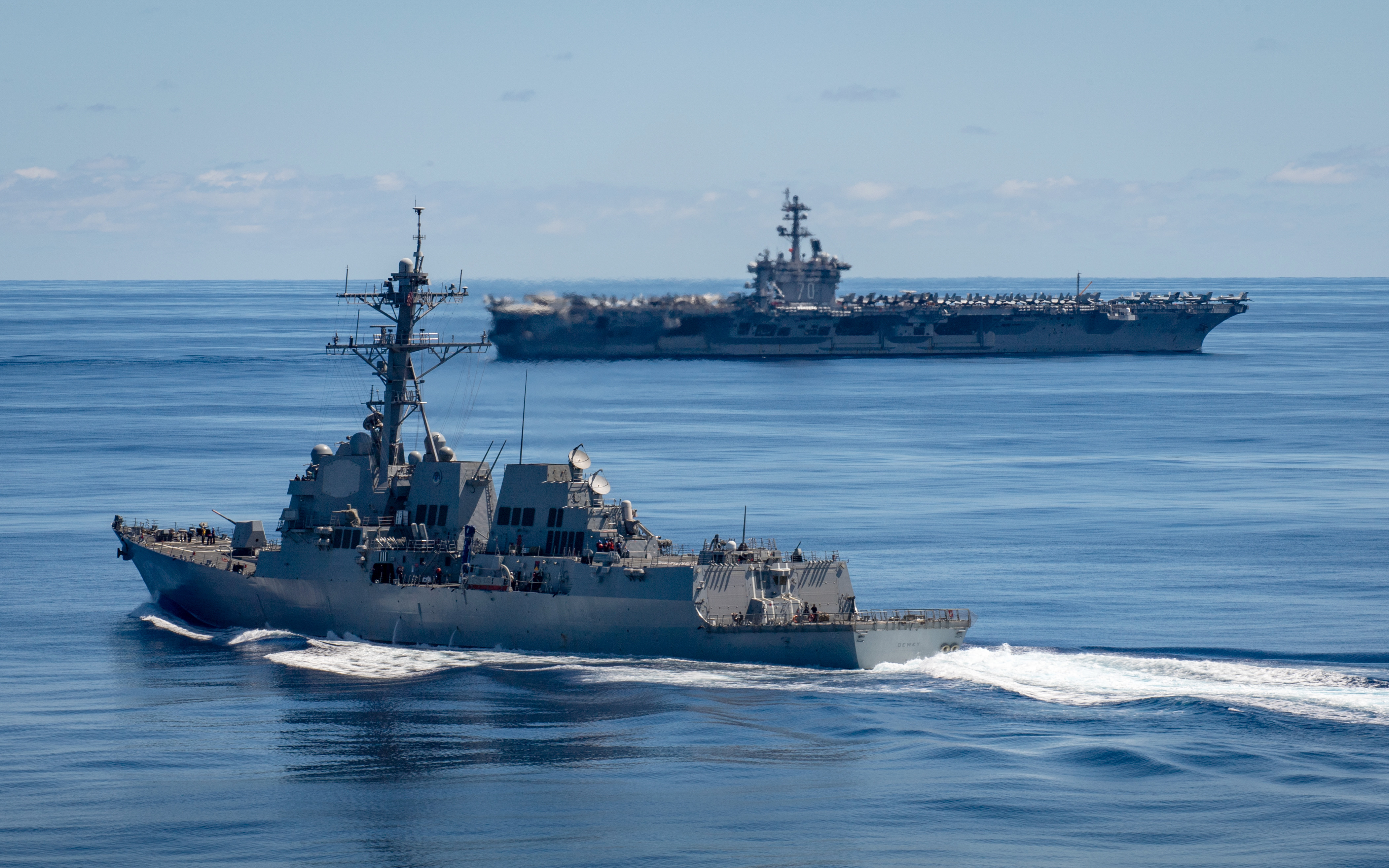
The Carl Vinson Carrier Strike Group is drilling near Hawaii this week as it prepares for an upcoming deployment later this summer.
After a maintenance period in which the Navy updated the carrier so it could accommodate the F-35C Joint Strike Fighter and the CMV-22B Osprey, USS Carl Vinson (CVN-70) is expected to deploy later this summer to the Indo-Pacific region, USNI News understands.
“In August 2020, Vinson completed a 17-month maintenance availability to receive major upgrades in order to support 5th generation aircraft, making Vinson the first aircraft carrier equipped to support both the F-35C Lightning II and CMV-22B Osprey,” U.S. 3rd Fleet said in a news release. “Upgrades include enhanced jet blast deflectors able to take the increased heat generated by the F-35C and the addition of the Autonomic Logistics Information System, which is the new computer network that supports the unique maintenance and tactical operations functions of the advanced aircraft.”
Vinson is operating with Carrier Air Wing 2 embarked. Five destroyers – USS Dewey (DDG-105), USS Howard (DDG-83), USS O’Kane (DDG-77), USS Michael Murphy (DDG-112) and USS Chafee (DDG-90) – make up Destroyer Squadron 1 and comprise the rest of the Strike Group.
In the Eastern Pacific
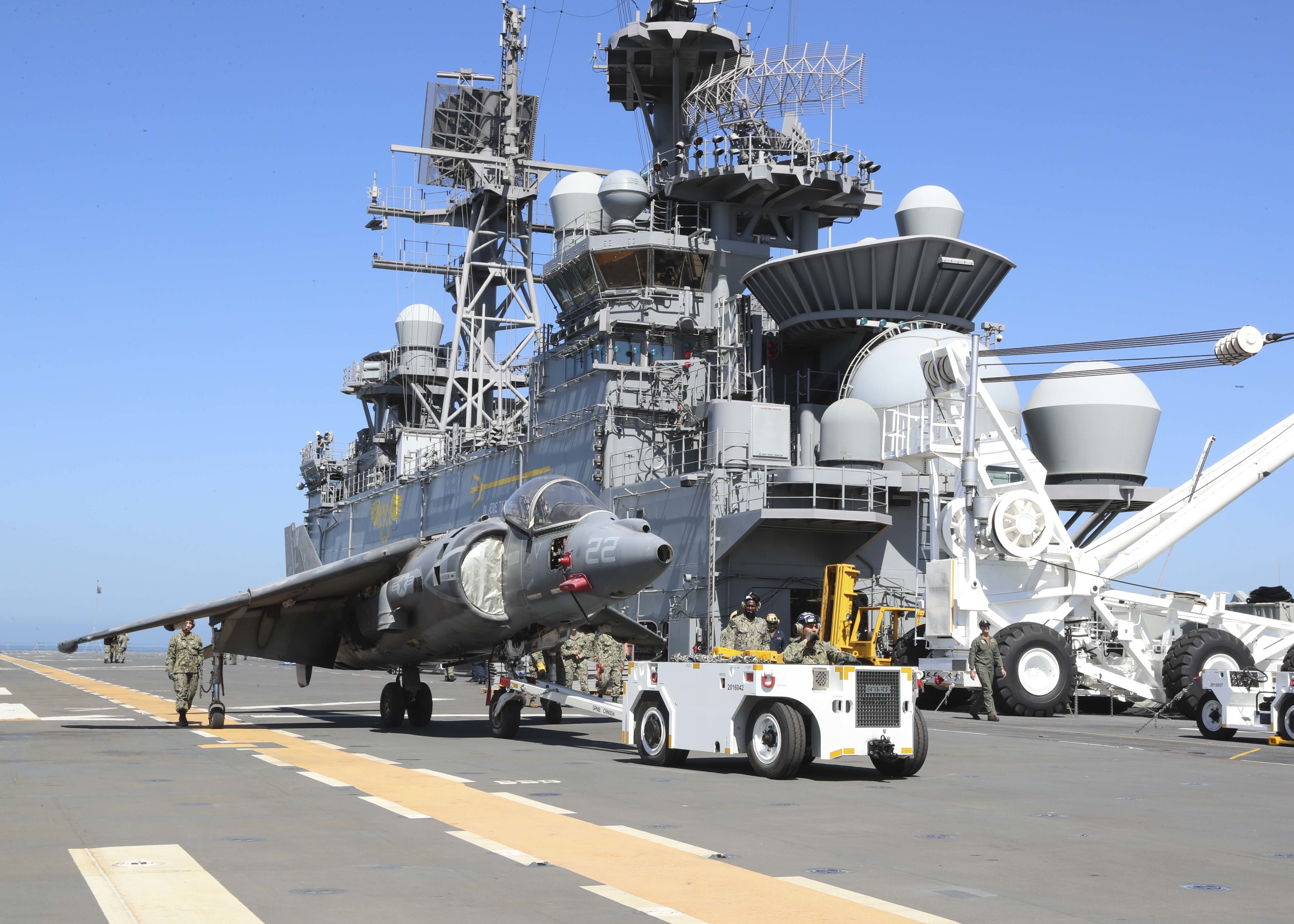
USS Tripoli (LHA-7) is underway in the Southern California Operating Areas.
In the Western Atlantic
USS Harry S. Truman (CVN-75) and USS Gerald R. Ford (CVN-78) are off the East Coast.
Truman recently completed a ten-month maintenance period at Norfolk Naval Shipyard and is beginning the basic pre-deployment training cycle. With Carrier Air Wing One embarked, the ship is conducting a Tailored Ship’s Training Availability (TSTA) and Final Evaluation Problem (FEP).
In addition to these major formations, not shown are thousands of others serving in submarines, individual surface ships, aircraft squadrons, SEALs, Special Purpose Marine Air-Ground Task Forces, Seabees, Coast Guard cutters, EOD Mobile Units, and more serving throughout the globe.


